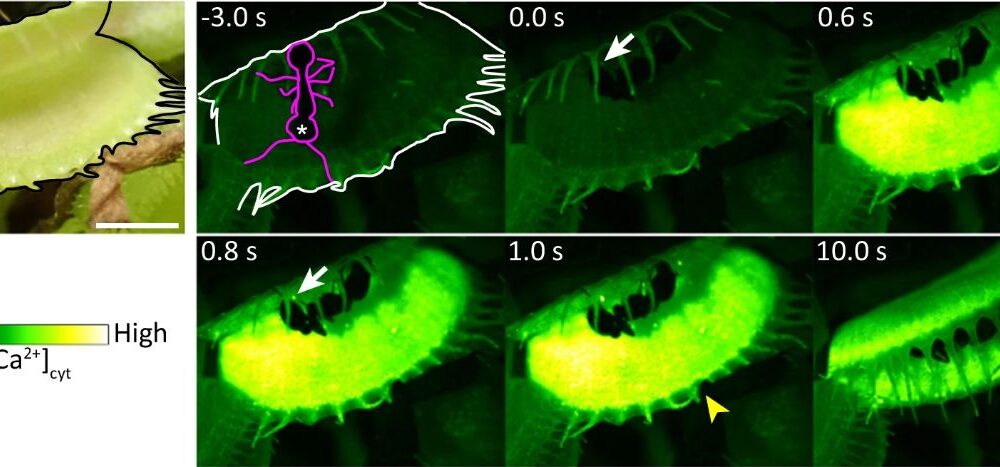Carnivorous plants, particularly the Venus flytrap (Dionaea muscipula), have long intrigued scientists and nature enthusiasts alike. These remarkable plants utilize a rapid, spring-loaded mechanism to ensnare prey, showcasing a unique adaptation that has sparked considerable interest. A recent study led by Hiraku Suda and colleagues sheds light on the underlying mechanism that enables this swift response, as detailed in their publication in Nature Communications.
The study focuses on a mechanosensor named DmMSL10, which is crucial for the plant’s sensitivity to touch. While it has been established that the sensory hairs lining the Venus flytrap’s leaves respond to specific stimuli through calcium signals, the precise function of this mechanosensor was not fully understood until now. By creating a variant of the plant lacking the DmMSL10 channel, the researchers were able to investigate its role in prey detection.
In their experiments, both wild-type and knockout variants of the Venus flytrap were subjected to mechanical stimulation. The findings revealed that while the sensory hairs of both variants triggered the release of calcium ions, the action potential generation rate was significantly lower in the knockout variant. In contrast, the wild-type plants continued to generate action potentials even after stimulation ceased. This crucial difference indicates that DmMSL10 is essential for processing minimal stimuli, thereby enhancing the plant’s ability to detect prey.
To further demonstrate the significance of DmMSL10, the research team conducted an experiment where ants were allowed to wander on the leaves of both plant types. The results were striking: the wild-type flytrap successfully captured the first ant that landed on its leaf, while the knockout variant failed to respond to multiple ants, highlighting the critical role of the mechanosensor in facilitating the calcium signaling necessary for prey capture.
The implications of this research extend beyond understanding the Venus flytrap. It suggests a possible evolutionary link between the mechanisms used by these plants and similar processes observed in animals. Further studies are anticipated to explore how these mechanisms evolved and their relationship to touch sensitivity in other organisms.
This breakthrough offers valuable insights into the complex interactions between plants and their environments, particularly in how they secure nutrients from their surroundings. As research continues, the Venus flytrap remains a compelling subject for studying the intersection of plant biology and sensory mechanisms.







